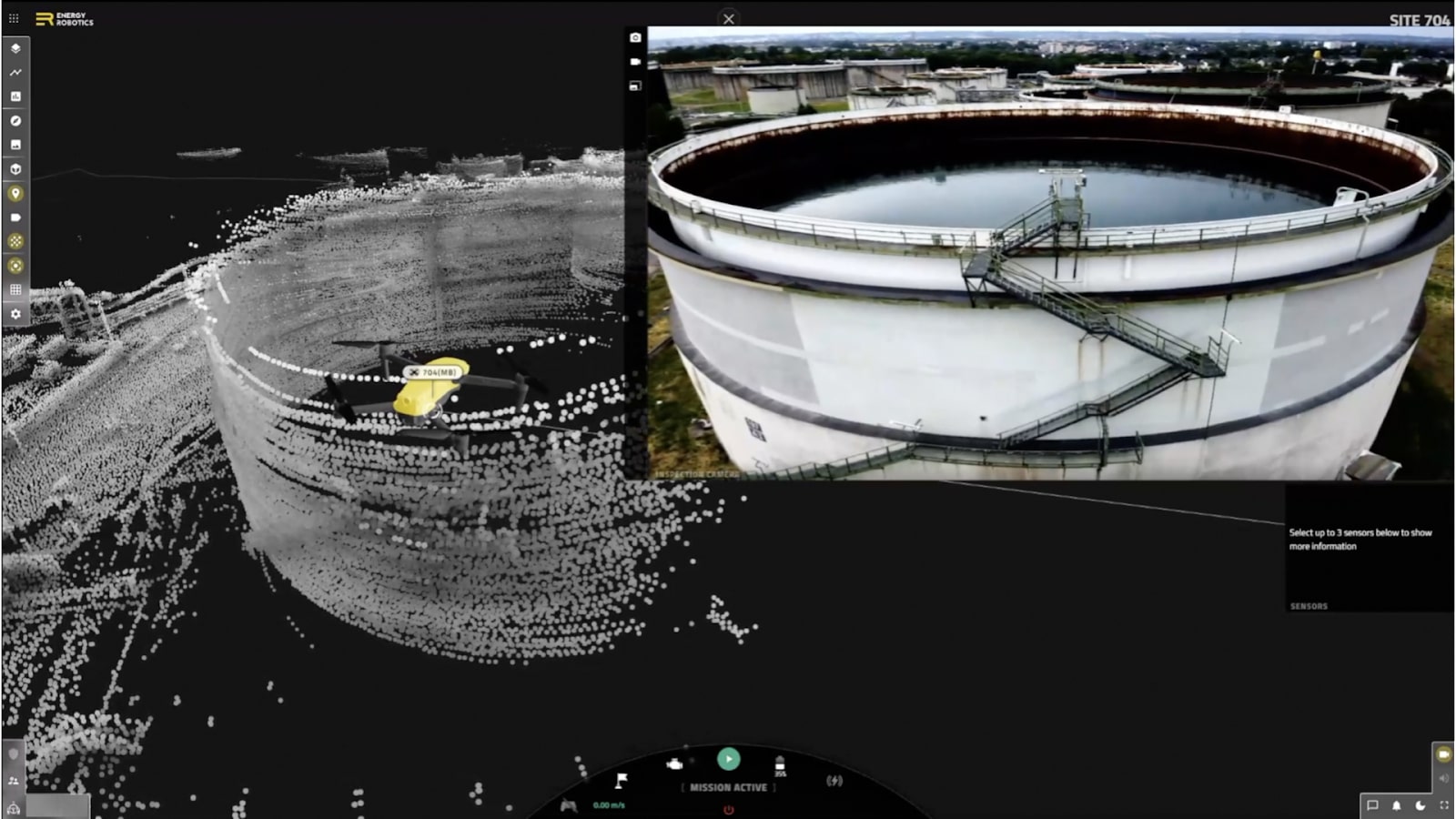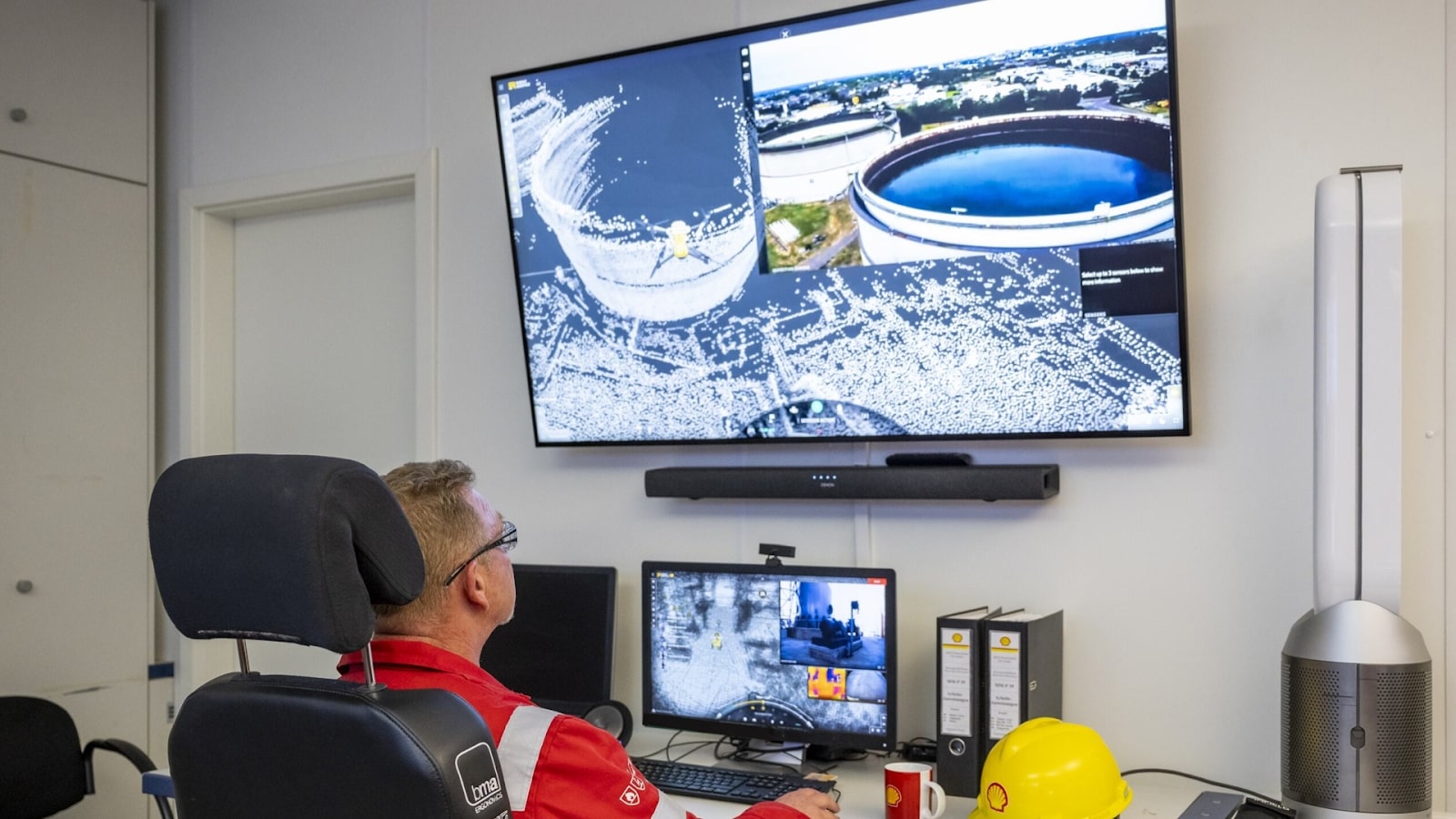With the advent of the digital revolution and progress towards Industry 4.0, technology has been continuously pushing boundaries and redefining our experiences. One such advancement is the use of drones in various industries for inspection purposes. Industrial Drone Inspection involves the use of unmanned aerial vehicles (UAVs), which are equipped with high-resolution cameras and sensors to inspect, monitor, and collect data in industrial settings.
Industries are now leveraging the potential of drones to inspect hard-to-reach and hazardous areas, collect data quickly, reduce downtimes, and enhance operational efficiency. As we delve further into this world of Industrial Drone Inspection, we will shed light on its growing importance, benefits, types, implementation, future trends, and challenges.
Table of Contents
- The Rise of Industrial Drone Inspection
- Why Industrial Drone Inspection is Crucial for Efficient Operations
- The Benefits of Industrial Drone Inspection
- Case Studies: Successful Industrial Drone Inspections
- How to Implement it in Your Operations
- Future Trends in Industrial Drone Inspection
- Challenges and Solutions in Industrial Drone Inspection
- Conclusion: The future of operations with Industrial Drone Inspection
The Rise of Industrial Drone Inspection
The dawn of Industrial Drone Inspection marked a significant shift in the way industries carry out inspections and operations. Over the past few years, the use of drones for industrial inspections has skyrocketed, thanks to technological advancements and regulatory support.
The drone technology, which was originally associated with military applications, has now found its place in numerous commercial sectors. The rapid growth of drone usage in industrial inspections can be attributed to their ability to reach inaccessible areas, collect high-quality data, and minimize safety risks.
Moreover, drones offer a cost-effective solution for inspections. Instead of hiring a crew, purchasing expensive equipment, or shutting down inspection operations, businesses can now use drones to carry out tasks efficiently and at a fraction of the cost. This rise of Industrial Drone Inspection is a testament to the fact that businesses are progressively recognizing the value of drones in enhancing their operations.
Why Industrial Drone Inspection is Crucial for Efficient Operations
In today's fast-paced world, efficiency is the key to staying competitive. Businesses are constantly on the lookout for technologies and methodologies that can optimize their operations, and drones have proven to be a valuable asset in achieving this goal. Industrial Drone Inspection has become crucial for efficient operations for several reasons.
1. Drones can quickly cover large and difficult-to-reach areas, saving valuable time and resources. They can also detect issues early on, allowing businesses to address them before they escalate, thereby reducing downtime and repair costs.
2. They provide precise and accurate data, which aids in making informed decisions. The high-resolution cameras equipped in drones can capture detailed images (RGB and thermal) and videos, even in low-light conditions. This eliminates the chances of human error and ensures thorough and accurate inspection.
3. Drones significantly enhance safety by eliminating the need for human involvement in potentially hazardous areas or situations. This not only protects the workforce, but also reduces the legal and financial risks associated with workplace accidents.

The Benefits of Industrial Drone Inspection
The benefits of Industrial Drone Inspection extend beyond efficiency and safety. It is a comprehensive solution that brings numerous advantages to businesses.
Saving Cost
One of the main benefits is cost-effectiveness. Drones reduce the need for expensive equipment, human resources, and operational shutdowns, thereby saving money for businesses.
Data Quality
Another key benefit is data quality. Drones are capable of capturing high-quality, detailed images and videos, which can be used for further analysis and decision-making. They can also collect data in real-time, enabling businesses to take immediate action if necessary.
Flexibility
Moreover, drones offer flexibility and versatility. They can be used in a variety of environments and for various purposes, from inspecting tank farms and construction sites to monitoring crop health in agriculture.
Case Studies: Successful Industrial Drone Inspections
Industrial Drone Inspection is not just a theoretical concept; it's a practical solution that has been successfully implemented by various businesses across the globe. Let's take a look at some case studies that demonstrate the effectiveness of drone inspections.
Oil and Gas Plants
One of the most prominent examples is the use of drones by oil and gas companies for tank farm inspections. Companies like Shell have used drones to inspect their vast networks of oil terminals, identifying potential leaks or damages early on, thereby preventing significant environmental and financial damage, while relieving their workforce from tedious manual inspection rounds at the same time.
Construction Industry
Another successful implementation is in the construction industry, where drones are used for site inspections. Drones can quickly and accurately map a construction site, identify potential issues, and monitor progress, saving time and resources.
Different Types of Industrial Drone Inspections
Drones can be used for a variety of inspection types, depending on the industry and the specific requirements of the task. Some of the common types of Industrial Drone Inspections include:
Structural Inspections: Drones are used to inspect the structural integrity of buildings, bridges, towers, tank rooftops and other structures. They can easily reach high and difficult-to-access areas and provide detailed images of the structure.
Substation Inspections: Drones are used in electrical substations to monitor critical equipment such as transformers and circuit-breakers. They are especially useful for inspecting substations located in remote difficult-to-reach areas.
Tank Farm Inspections: Drones enable inspectors to monitor the roof-tops of tanks in massive tank farms. The drones empower them to take action faster by sending alerts when anomalies are detected. This is made possible by AI-data processing of the data captured by the drone.
Agricultural Inspections: In the agriculture sector, drones are used to monitor crop health, identify pest infestations, and assess soil conditions.

How to Implement it in Your Operations
Implementing automated drones in your operations involves several steps, which are decisive for success and failure:
1. Identify the areas where drones can be used for inspections. This would depend on your industry and the specific tasks that need to be carried out.
2. Acquire the necessary equipment. This would include drones, cameras, and software for data analysis. It's important to choose equipment that meets your specific requirements and is compliant with the regulatory standards.
3. Train your staff on how to operate the drones and analyze the data. This might involve hiring or training a dedicated drone pilot, as well as training other staff members on data interpretation and decision-making.
4. Establish a process for carrying out the inspections, analyzing the data, and taking necessary actions. This would involve planning the inspection schedules, setting up data collection and analysis procedures, and establishing a response plan for identified issues.
The best part is you can make these steps easier and onboard drones smoothly by contacting the experts at Energy Robotics. When using Energy Robotics’ innovative software, your employees do not need special training to fly the drones and create new inspection missions. Furthermore, the software is equipped with AI-driven data processing, so the collected data is transformed into insights and delivered to the fingertips of the operator.
Learn how you can easily onboard drones for inspecting your facilities by watching the Energy Robotics webinar, "Automated Drone Inspections", on-demand:

Drone-in-a-Box for hazardous Areas
Drone-in-a-Box technology has emerged as a strategic asset for industrial inspections, enhancing safety, improving efficiency and reducing costs. This transformative, remote docking station is designed to perform unmanned, automatic missions, effortlessly navigating complex industrial environments. The Energy Robotics Software plays a crucial role in this process - it integrates seamlessly with various docking stations available for industrial use. With a Drone in a Box solution, you can rest easy knowing that your drones are securely housed, charged, and ready to execute missions whenever necessary.

BVLOS Approval and the Importance of being “Regulation Ready”
With the Beyond Visual Line of Sight (BVLOS) approval, operators can fly drones without having to see the drone directly in their line of sight. This is a game-changer as it enables operators to supervise drone flights from anywhere and does not require them to be onsite.

However, there is a pressing need for all stakeholders to be "regulation ready" for procuring the BVLOS approval. Being “BVLOS approved” implies a thorough understanding and adherence to the regulatory framework governing the use of BVLOS drones. This includes abiding by licensing requirements, safety standards, privacy concerns, and airspace restrictions. The Energy Robotics Drone Solution is BVLOS-approved in both Germany and the European Union.
Future Trends in Industrial Drone Inspection
The future of Industrial Drone Inspection looks promising, with several trends shaping its trajectory.
One of the key trends is the integration of artificial intelligence (AI) and machine learning (ML) in drone technology. Drones equipped with AI and ML capabilities can analyze data in real time, identify patterns, and make predictions, thereby enhancing the efficiency and effectiveness of inspections.
Another trend is the use of swarm technology, where multiple drones work together to carry out inspections. This can significantly speed up the inspection process and cover larger areas.
Furthermore, advancements in sensor technology are enabling drones to detect a wider range of issues. For instance, thermal sensors can detect heat leaks in buildings, while multispectral sensors can detect pest infestations in crops.
Challenges and Solutions in Industrial Drone Inspection
Despite the many benefits and advancements, Industrial Drone Inspection faces several challenges. These include regulatory restrictions, privacy concerns, and technical limitations such as limited battery life and vulnerability to weather conditions.
However, solutions are being developed to overcome these challenges. For instance, drone manufacturers are working on improving battery life and weather resistance. Moreover, regulatory bodies are updating their policies to facilitate the use of drones while ensuring safety and privacy.
In terms of privacy, businesses can take measures to ensure they respect the privacy rights of individuals while carrying out drone inspections. This could include notifying people before conducting inspections, avoiding areas where privacy could be compromised, and ensuring that the data collected is securely stored and used appropriately.
Conclusion: The future of operations with Industrial Drone Inspection
In conclusion, Industrial Drone Inspection is indeed the future of efficient operations. It brings a plethora of benefits, from enhanced efficiency and safety to cost savings and high-quality data. With the continuous advancements in technology and the increasing recognition of its value by businesses, Industrial Drone Inspection is set to become a norm in various industries.
However, businesses need to understand the challenges and ensure they implement drone inspections responsibly and effectively. By doing so, they can harness the full potential of this technology and pave the way for a more efficient and innovative future.
Embrace Industrial Drone Inspection today and take your operations to new heights. Book a free demo now.







